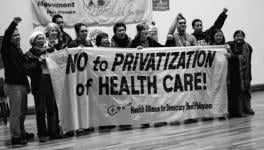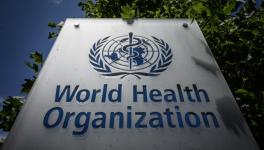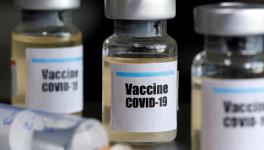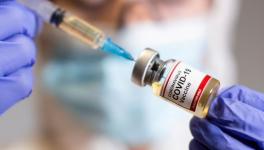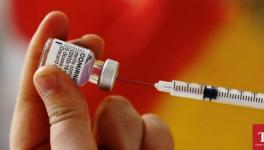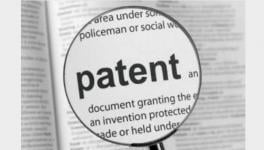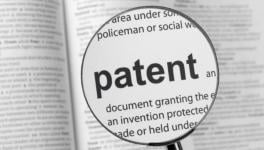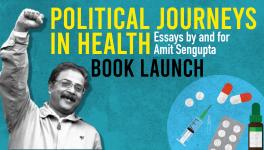What are Biologics and why Indian Regulators Must Ensure Access to them
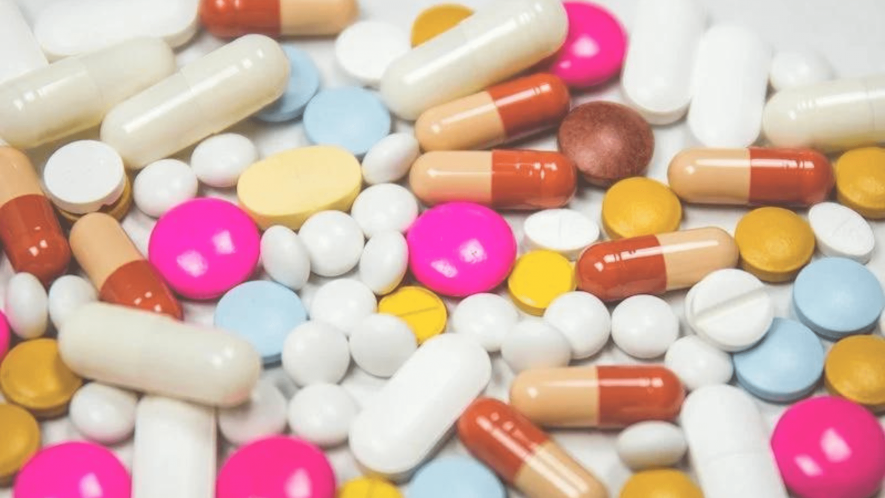
Representational Image. Image Courtesy: Rawpixel
In 1804, the German pharmacist Friedrich Sertürner extracted morphine, the first modern drug, from opium. It was what we call a small molecule drug, or SMD, which we also categorise as an organic compound. By contrast, biologics—larger or ‘macro’ molecules—came into use over a century later, when in 1922, insulin was used to treat a 14-year-old boy dying of Type 1 diabetes.
Biologics include protein molecules and antibiotics and are more complex than earlier small-molecule drugs. They are manufactured using chemical synthesis processes, and today, most biological drugs are developed through genetic engineering.
On 23 January 1923, the United States granted Frederick Banting, James Collip and Charles Best patents on insulin and their method of making it. However, believing that “insulin belongs to the world” and keen to ensure everybody who needs it must get to access it, Banting sold the patents to the University of Toronto for just US $1 each.
But another century has passed, and insulin is still inaccessible to many people because of exorbitant prices, ensured by a system that puts profits before people. Amit Sengupta, one of India’s foremost advocates for health-for-all once said it all: “If care links to profit, more ill health means more profit!”
It is a consequence of the evergreening of patents, where minor tweaks are awarded new patents under the United States patent law, which has made insulin inaccessible to millions worldwide. Indeed, after the Left put up a fight in Parliament, Clause 3D was inserted in the Indian Patents Act to bar patent evergreening.
Indeed, insulin is a protein, but there are numerous other kinds of therapeutics based on large molecules—monoclonal antibodies, growth factors, hormones, enzymes, oligonucleotides and others. As these are made from living cells or organisms, they are called biologics. This class of therapies help halt disease progression or alleviate inflammatory, rheumatological or dermatological symptoms and conditions common in connective tissue disorders and even cancers or malignant growths.
Biologics are the fastest growing class of medicines and a significant part of health care expenditure. The price of some biological therapies, such as monoclonal antibodies, currently ranges from Rs 2 lakh to Rs 4 lakh per treatment cycle. The price for gene therapy biologics—which modifies or manipulates the expression of a gene or alters the properties of living cells—is enormously higher. Their exorbitant costs severely limit access to biologics and gene therapies.
Generic drugs, which significantly enhance drug access, have the same active components as the equivalent small-molecule drugs. The classic example of how they created competition and led to price drops is HIV/AIDS drugs. In the early 2000s, after Indian companies introduced generics, treatment prices dropped by 97.5%.
However, unlike small molecules, no two biologics—not even two batches of the same biologics—are identical. That is why, for biologics, the generic equivalents are known as ‘biosimilars’. The original biologic drug and the new generic one may have similar structures and actions, but they are not identical. However, biosimilars are accepted and recognised in terms of their safety, purity, and potency as equivalent to the biologics they imitate. Usually, data submitted during regulatory approval for a biosimilar drug, the clinical equivalence between it and the reference biologic must be established. Rigorous pre-approval testing ensures biosimilars are as safe and effective as their reference biological.
Further, small-molecule drugs are protected by patents as they are identifiable by their chemical structure and components. However, in the case of biosimilars, it is not chemical equivalence but clinical equivalence that matters. Patents, therefore, are not a workable form of protection for them. In their case, instead of patents, the original biologic developers are protected through regulatory barriers. The basis of these barriers is the constitution of the clinical equivalent (and other regulatory requirements).
As the pipeline for novel small-molecule drugs has dried up, biologics have become the battleground. Like generics for the former, biosimilars can decrease the cost and access to biologics, including gene therapies.
In the United States, the Biosimilars Council reported in October 2021 that the FDA had approved 39 biosimilars for 11 molecules. Biosimilars allowed savings to skyrocket to US $7 billion in 2021 alone and a total of US $13 billion since 2015. Patients using biosimilars spend about 50% less than the reference brand biologic costs. Over 95 biosimilar development programs are ongoing, showing a 50% increase over the previous four years in 2021.
When India approved and marketed the first biosimilar for hepatitis B (regulators here refer to biosimilars as “similar biologics”) in 2000, there were no specific guidelines for them. Today, India has around 127 approved biosimilars manufactured and marketed by over 100 Indian companies. The Indian biosimilar market was worth around US $300 million in 2015. In 2016, the Central Drugs Standard Control Organisation and the Department of Biotechnology revised India’s “Guidelines on Similar Biologics”, initially framed in 2012.
In 2021, the United Kingdom waived animal studies and comparative efficacy trials for approving biosimilars. In 2022, the World Health Organisation revised its Similar Biological Products Guidelines to “Biosimilar Guidelines”, considerably reducing the need for in-vivo (inside the live body) animal studies and allowing in vitro studies based on tissues in the laboratory. In December 2022, United States President Joe Biden signed legislation removing animal studies requirements for biosimilar marketing approvals. Similarly, the government body responsible for national health policy, Health Canada, does not require animal studies for biosimilar approval.
Waiving comparative efficacy studies and in-vivo studies will decrease regulatory costs in India as well. Streamlined biosimilar development can significantly reduce the cost of biosimilars while maintaining safety and efficacy. India urgently needs to revise its 2016 guidelines to significantly reduce biosimilar costs and make them more accessible.
Though patents are supposed to protect a patent holder’s right to profit from their inventions for a reasonable time, drug companies have made patent weapons to block competition. In “How a Drug Company Made $114 Billion by Gaming the US Patent System”, The New York Times in January details how, at the expense of taxpayers and patients, AbbVie delayed competition for its blockbuster drug Humira, which treats conditions like arthritis. The patent on the best-selling anti-inflammatory medication was expiring at the end of 2016, but AbbVie blocked competitors using “patent thickets”. It is a strategy of filing a whole series of patents on various parts of the process and intermediate products instead of just one patent. AbbVie not only blocked biosimilars but kept increasing the price of Humira and filed suits against its competitors, who were likely to get regulatory approval for their biosimilars. Ultimately, it settled, but on the condition that its rivals would delay their product launches to 2023.
Companies like Bristol Myers Squibb and AstraZeneca have used similar tactics to increase profits. AbbVie did not create the patent-prolonging strategies it used, but even in an industry widely known to use the United States intellectual property regime to serve its greed, AbbVie’s handling of Humira is striking. Sengupta said in 2018 at the Fourth Peoples’ Health Assembly held at Savar city in Dhaka: “Finally, the hunger of capital has crossed borders into the belly of the beast—it haunts Europe, haunts North America as well”.
The author was a professor of bioinformatics at the Madurai Kamaraj University, treasurer of the All India People’s Science Network and former president of the Tamil Nadu Science Forum. The views are personal.
Get the latest reports & analysis with people's perspective on Protests, movements & deep analytical videos, discussions of the current affairs in your Telegram app. Subscribe to NewsClick's Telegram channel & get Real-Time updates on stories, as they get published on our website.










